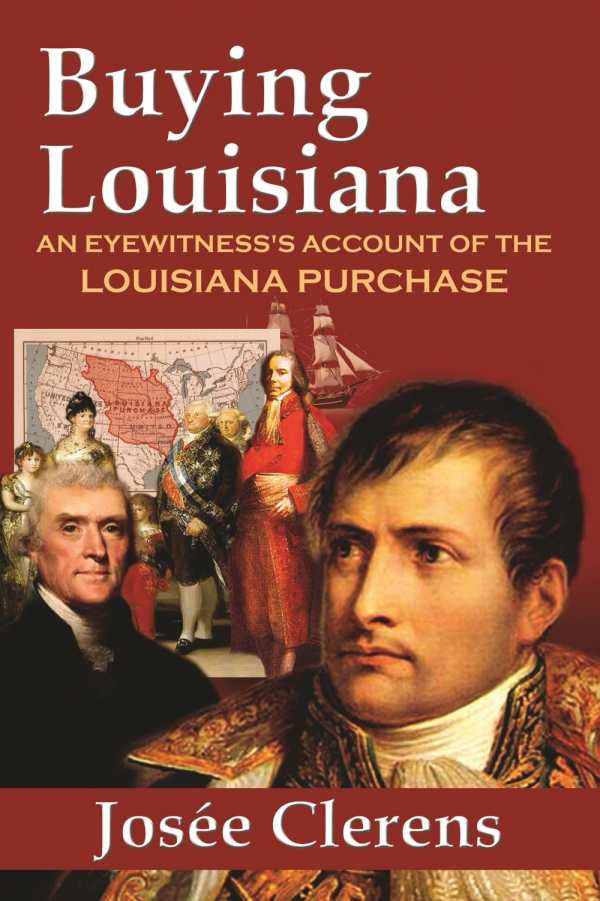Buying Louisiana
An Eyewitness's Account of the Louisiana Purchase
A fictionalized account of the Louisiana Purchase helps us visualize an interesting and complex time in history.
The Louisiana Purchase of 1803 involved deft negotiations between the United States, France, and Spain and featured the interplay of some of the era’s most legendary figures. In Buying Louisiana, Josée Clerens imagines how that interplay might have taken place, using the novel to introduce the strategy behind the deal for all sides and the many spots along the way where the whole thing could have fallen apart.
The novel presents several settings with parallel action, each story and group of characters represented in separate chapters: Thomas Jefferson and his cabinet members in Washington, American ambassador Robert Livingston in Paris, Napoleon Bonaparte and his advisors and family in France, King Charles IV in Spain, and others. Clerens has a knack for descriptive writing, making all the scenes easy to visualize from the detail in the prose.
On the other hand, the story suffers from a lack of momentum, with scenes playing out in a logical order but without a sense of tension. The outcome is known already, but the circumstances also never really feel in jeopardy. Characters talk about their disagreements in ways that effectively describe the differing perspectives on the purchase, but the action doesn’t reflect the same conflict. Many chapters end with comments from the eyewitness who is allegedly providing the account, but this device needlessly distracts from the story, as the use of point-of-view already serves that function, and it’s never clear within the story how that narrator is present in all venues.
Buying Louisiana posits Robert Livingston as the hero of the piece, which is an interesting idea. Clerens does a nice job introducing the many moving parts that had to fall into place for Spain to give up the territory, France to want it as an asset to sell, and the United States to wind up buying far more than it initially expected. The book’s use of multiple locales and characters keeps any scene from going on too long and provides some context for the world outside the negotiations.
The history of the purchase is inherently interesting, and Buying Louisiana has enough description and history to give a useful overview to those readers who might not be familiar with the story.
Reviewed by
Jeff Fleischer
Disclosure: This article is not an endorsement, but a review. The publisher of this book provided free copies of the book to have their book reviewed by a professional reviewer. No fee was paid by the publisher for this review. Foreword Reviews only recommends books that we love. Foreword Magazine, Inc. is disclosing this in accordance with the Federal Trade Commission’s 16 CFR, Part 255.

